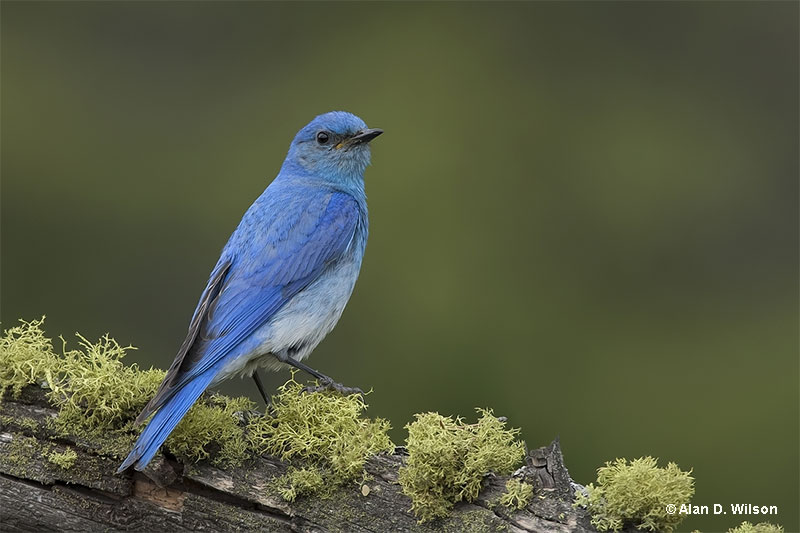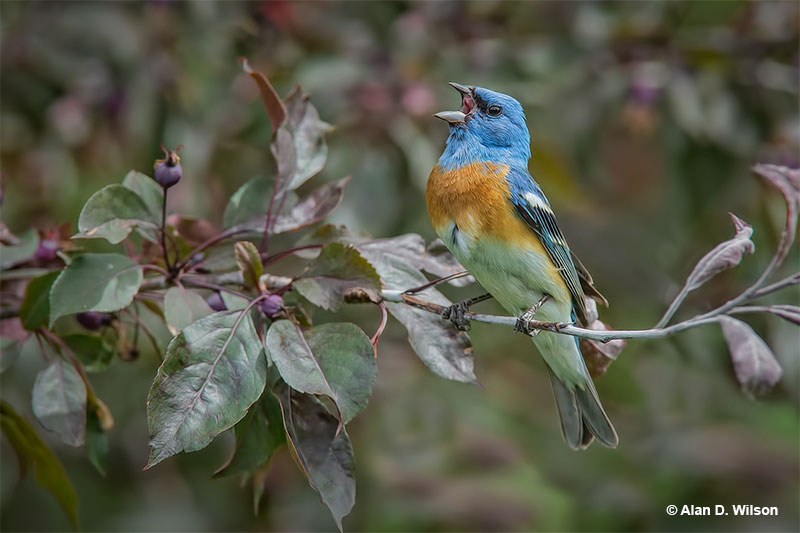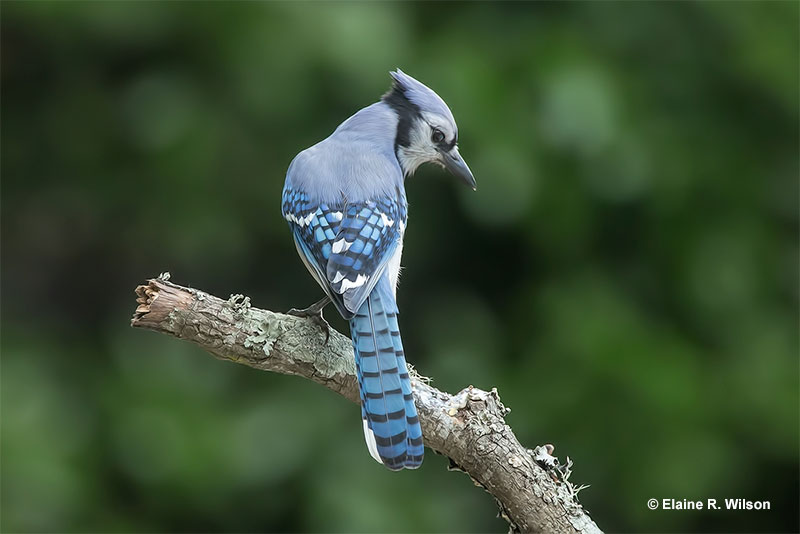
Blue is an uncommon color in birds, and their feathers don’t make this color the same way they generate shades of yellow or red. In fact, blue birds are not blue at all! They have other ways of showing this color.
How do birds show blue plumage? Why do some blue birds appear black or gray in certain types of lighting?
See this article for answers and more about birds with blue feathers!
On this page
Do Birds Really Have Blue Feathers?
As pretty as a Mountain Bluebird is, technically, this beautiful bird doesn’t have blue feathers. I know that seems impossible, but it’s true! While birds use pigment to create red, yellow, and other colors, they can’t generate blue pigment.
Since they obviously look blue, how is that even possible? Although they don’t technically have blue plumage, they can still appear blue because of how color is “produced.”
The colors we see are the part of the light spectrum that gets reflected off the surface of an object.

This Lazuli Bunting appears blue, but are its feathers actually blue?
For example, when we admire the brilliant red of a male Northern Cardinal, we are actually seeing the light wavelengths that “bounce off” their feathers. This happens because the molecular structure of the pigments in the feathers reflects red and absorbs the other colors of the light spectrum.
Related: What does seeing a ‘blue’ bird mean?
No matter how much light hits those red feathers, they are going to be red. Blue feathers, though, don’t always look the same shade of blue. This is because the blue colors we see are caused by light reflecting off the structure of the feather itself and not its pigment.
Change the angle of the feather or reduce the light and it can’t reflect the same blue colors.
Are There Any ‘True’ Blue Birds?
Birds with blue feathers are gorgeous, but oddly enough, there aren’t any “true” blue birds!
That might seem weird because some of our most familiar birds have obvious, beautiful blue colors. Take a close look at the wing and tail feathers of a Blue Jay, and you’ll see lovely, shining shades of blue and turquoise. When the sun hits the feathers of a male Eastern Bluebird, it looks like someone colored it with fresh, glossy pastel paint!

However, in a sense, this is an illusion. As explained above, what we are seeing is how light gets reflected off the structure of their feathers and not any actual pigment.
It’s the same situation for every bird with blue colors. Although male Common Peafowl show gorgeous deep shades of blue on their head and neck, that comes from the structure of their feathers. The same goes for the breathtaking, shining turquoise colors of tropical cotingas, the blue gorget of the Blue-throated Mountain-Gem, and all other species with blue colors.
Even the colors on incredibly beautiful birds like the Blue Bird-of-Paradise and the Asian Fairy-Bluebird are created by the interaction of light with feather structure.
Do Blue Birds Appear Blue Year-Round?
A lot of colorful birds only show bright colors at certain times of the year. Typically, males have brighter colors during the breeding season but then show duller plumage by fall. We see this situation in most warbler species and several other birds.
However, in the case of male warblers with blue plumage, oddly enough, they keep their blue colors all year long. For example, adult male Cerulean and Black-throated Blue-Warblers still show the same shades of blue on their tropical wintering grounds.
Some other birds with blue plumage also show the same blue colors throughout the year. For example, to our eyes, Blue Jays, other jay species, and male bluebirds look just as blue in the winter as they do in the summer.
Like all birds, they still molt their feathers, but the new ones are the same color as the old ones. However, there are a couple of blue-colored birds that do change their colors for the winter. By fall, male Indigo and Lazuli Buntings lose most of their blue coloration.
In spring and summer, the males of these pretty birds have gorgeous blue colors. However, in winter, they have brown plumage with some patches of dull blue.
Frequently Asked Questions
Does blue exist in nature?
Blue does exist in nature. However, it is rare and mostly occurs in plants mixing pigments or in feathers and other structures reflecting the blue wavelength of the light spectrum.
Why do bird feathers look blue?
Bird feathers look blue because their structure reflects the blue part of the light spectrum while absorbing other colors.
Are Blue Jay feathers actually blue?
Blue Jay feathers are actually gray or blackish. However, the structure of the feathers interacts with light to make them appear blue.
Are peacock feathers actually blue?
Peacock feathers are not actually blue. They are black but have a structure that reflects blue waves of light.

